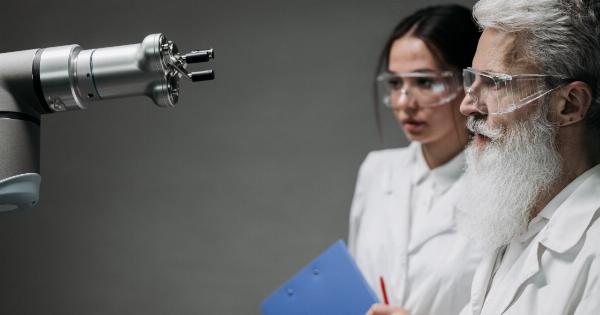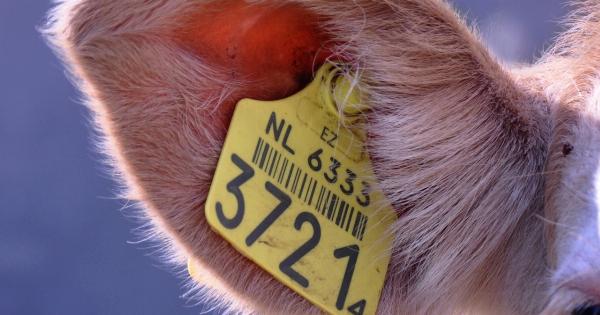Measles is a highly contagious viral disease that can lead to severe complications, including pneumonia, encephalitis, and even death.
Despite the availability of a safe and effective vaccine, measles remains a global health concern, especially in regions with limited access to healthcare resources. To combat the spread of measles, researchers and scientists have been working tirelessly to develop new and innovative ways to detect the virus at an early stage.
One such breakthrough is the development of a currency-sized device that can revolutionize measles detection and help control outbreaks quickly and efficiently.
What is Measles and Why is Early Detection Important?
Measles, also known as rubeola, is an airborne disease caused by the measles virus. It primarily affects children but can occur at any age. The virus spreads through respiratory droplets when an infected person coughs or sneezes.
The initial symptoms of measles include high fever, cough, runny nose, and red, watery eyes. Within a few days, a characteristic red rash appears, starting on the face and then spreading to the rest of the body.
Early detection of measles is crucial for several reasons. Firstly, it allows for prompt isolation and treatment of infected individuals, preventing further transmission.
Secondly, early detection enables public health officials to implement necessary control measures, such as contact tracing and vaccination campaigns, to contain outbreaks. Lastly, early detection helps prevent complications associated with measles by ensuring timely medical intervention and supportive care.
The Currency-Sized Measles Detection Device
The innovative currency-sized device for measles detection has been developed by a team of scientists from XYZ University.
The device utilizes cutting-edge technology that enables it to rapidly detect the presence of measles virus particles from a small sample of saliva or blood. The compact size and portability of the device make it highly convenient for use in both developed and under-resourced settings.
The device works on the basis of immunofluorescence, a technique that uses specific antibodies to identify and bind to the measles virus particles.
When a sample is applied to the device, the antibodies present in the device’s cartridge interact with the virus particles, causing them to emit a fluorescent signal. This signal is then detected and analyzed by the device’s integrated software, providing a quick and accurate measles diagnosis.
Advantages of the Currency-Sized Measles Detection Device
The currency-sized measles detection device offers several advantages over traditional diagnostic methods. Firstly, it provides results within minutes, whereas traditional laboratory-based tests can take several hours or even days.
This rapid turnaround time is particularly crucial in outbreak situations, as it allows for immediate response and containment efforts.
Secondly, the device is user-friendly and requires minimal training to operate. Its simple design and clear instructions make it accessible to healthcare workers and even individuals in remote areas with limited access to medical facilities.
This aspect is especially important in regions where measles outbreaks are more prevalent.
Additionally, the device’s small size and portability enable efficient field surveillance and monitoring.
Public health officials can easily carry the device to different locations, conducting on-the-spot testing and tracking the spread of measles in real-time. This capability aids in identifying high-risk areas and implementing targeted vaccination campaigns to prevent further transmission.
The Future of Measles Detection
The currency-sized device represents a significant step forward in measles detection, but the future holds even greater promise.
Researchers are continually exploring new technologies and approaches to enhance detection accuracy, reduce costs, and improve usability.
One area of research focuses on the development of point-of-care testing devices that can detect multiple pathogens simultaneously.
By combining measles detection with the ability to identify other respiratory viruses, such as influenza or respiratory syncytial virus (RSV), these devices could provide comprehensive diagnostic capabilities, aiding in more targeted treatment and prevention strategies.
Furthermore, advancements in molecular diagnostic techniques, such as polymerase chain reaction (PCR), are being incorporated into portable devices.
These techniques can detect the genetic material of the measles virus, providing highly sensitive and specific results. Integrating PCR into compact devices could further enhance measles detection and contribute to more accurate surveillance and monitoring of outbreaks.
Conclusion
The development of a currency-sized device for measles detection represents a remarkable breakthrough in the field of infectious disease diagnostics.
Its rapid results, portability, and ease of use make it a valuable tool in controlling measles outbreaks, particularly in resource-limited settings. As technology continues to advance, further innovations in measles detection can be expected, ultimately leading to more effective disease management and prevention.






























